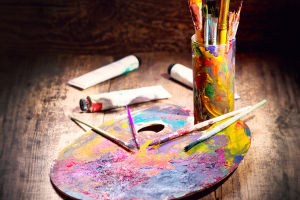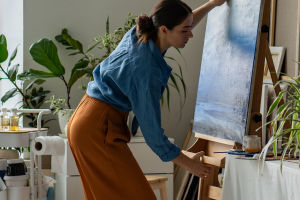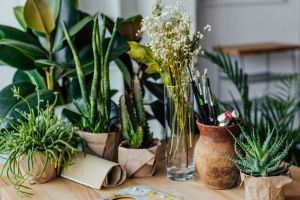Ever feel like your thoughts are tangled headphones? You know the solution’s *somewhere*, but pulling at the knots just makes it worse. What if instead of wrestling with words, you could untangle those feelings with color, shape, or sound?
That’s the magic door art therapy opens, Lykkers. It’s not about becoming Picasso; it’s about letting your inner world spill onto the page, the clay, or the dance floor, revealing pathways to healing you never knew existed.
Beyond Talk
Sometimes, words simply aren't enough. Deep emotions, trauma, or overwhelming stress can feel locked away. Art therapy provides a powerful alternative language. Using paint, clay, collage materials, or even movement, individuals bypass the verbal roadblock. Imagine a child, too upset to explain a playground conflict, furiously scribbling red crayon – that raw energy is the communication. It creates a safe space where vulnerability isn't forced but naturally expressed through the creative act itself.
Brain Rewired
What happens inside your head when you get lost in drawing? Science shows it's profound. The act of creating actively stimulates neural pathways. A 2018 study in The Arts in Psychotherapy confirms it boosts serotonin and enhances blood flow to brain regions linked to emotion and memory. Think of it as a gentle workout for your mind. This isn't just feeling better; it's your biology shifting. Engaging with art literally helps rewire your brain toward greater calm and resilience.
Self-Discovery Spark
Creating something tangible – a sketch, a poem, a rhythmic beat – cultivates something precious: pride. Art therapy isn’t about critique; it’s about the act of expression. Seeing your feelings take shape fosters a sense of accomplishment. This builds self-esteem brick by creative brick. You learn to trust your instincts, appreciate your unique perspective, and develop a kinder, more accepting view of yourself.
For Everyone
Think art therapy is just for kids or "artsy" types? Think again. Its versatility is astounding. Children naturally use it to process emotions they can't verbalize. Teens find a non-judgmental outlet. Adults overwhelmed by pressure discover a vital pressure valve. Seniors, facing cognitive changes or loss, experience mental clarity and connection. It adapts seamlessly across ages and challenges.
Daily Dose
You don't need a therapist's office to harness this power. Integrating simple creative rituals into daily life builds resilience. Dedicate just 10 minutes: doodle while on hold, mold play-dough at your desk, or hum a tune while cooking. These micro-moments of creation act as preventive care, buffering against daily stressors before they build.
Therapist's Role
While personal art is beneficial, professional art therapy adds crucial guidance. A trained art therapist creates a structured yet open environment. They help set therapeutic goals, suggest appropriate materials, and gently guide reflection – not interpreting the art, but helping the client explore its meaning. It’s a collaborative exploration using art as a map to navigate the inner landscape.
Your Canvas Awaits
The journey toward greater emotional well-being and self-understanding doesn't always start with words. Sometimes, it begins with a brushstroke, a lump of clay, or a spontaneous dance move. Art therapy, whether guided or personal, offers a profound way to access hidden parts of ourselves, manage life’s storms, and rediscover joy. So, friends, why not pick up that pen, that clay, or move to a favorite song? Your inner world is waiting to be expressed.


